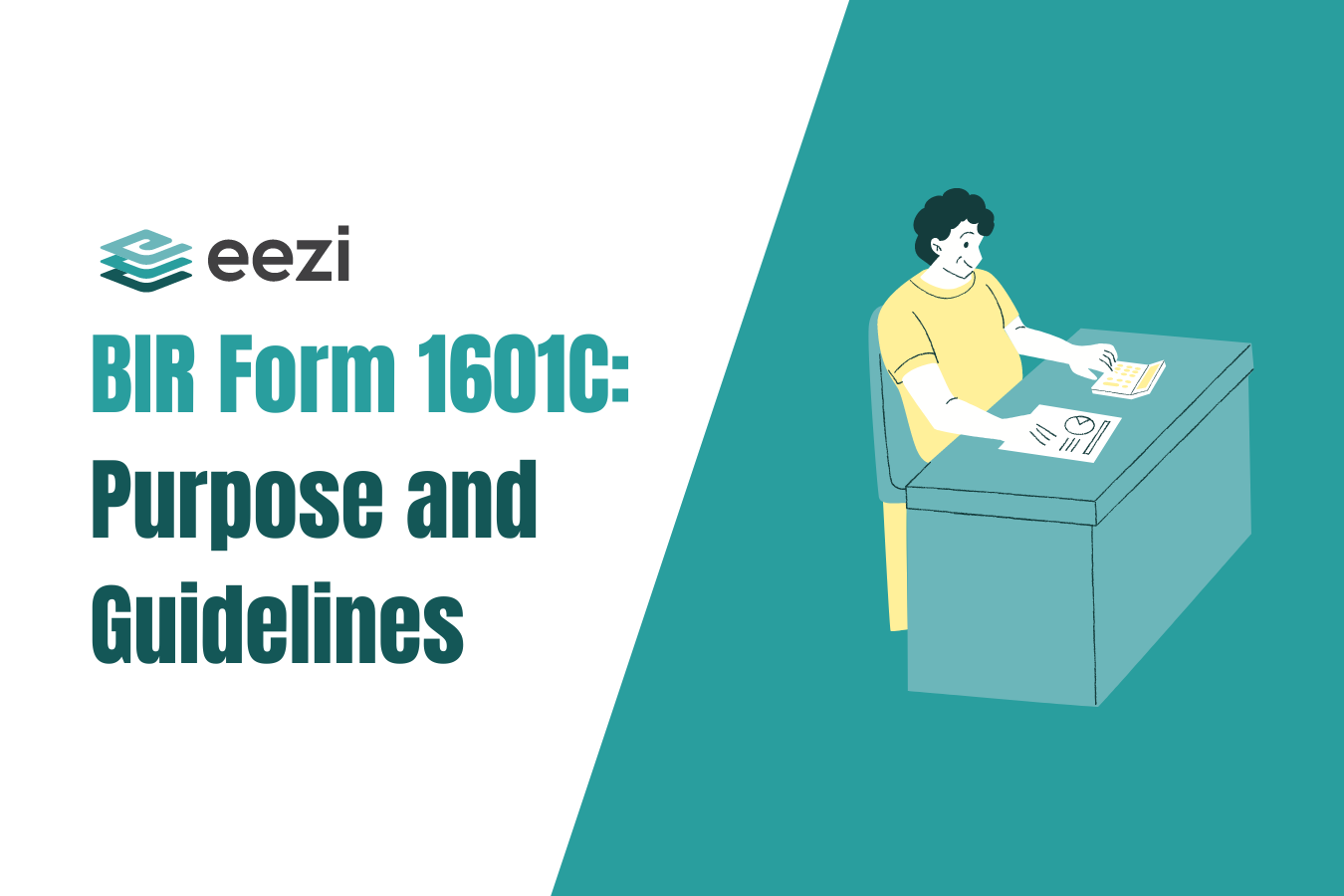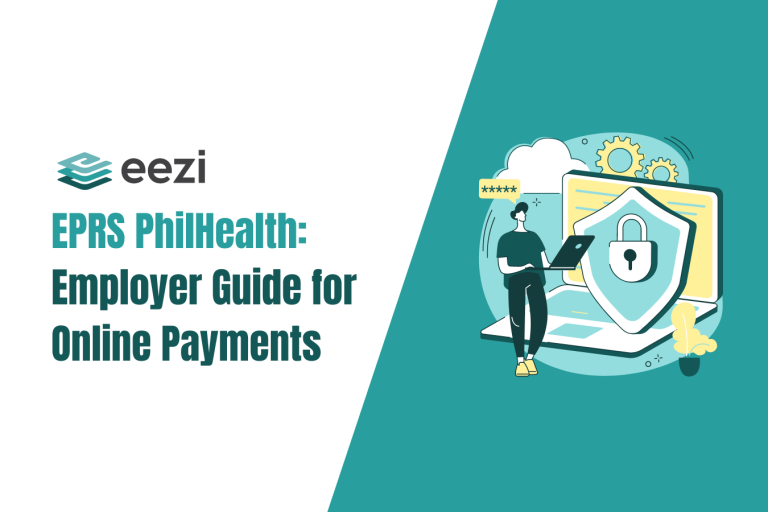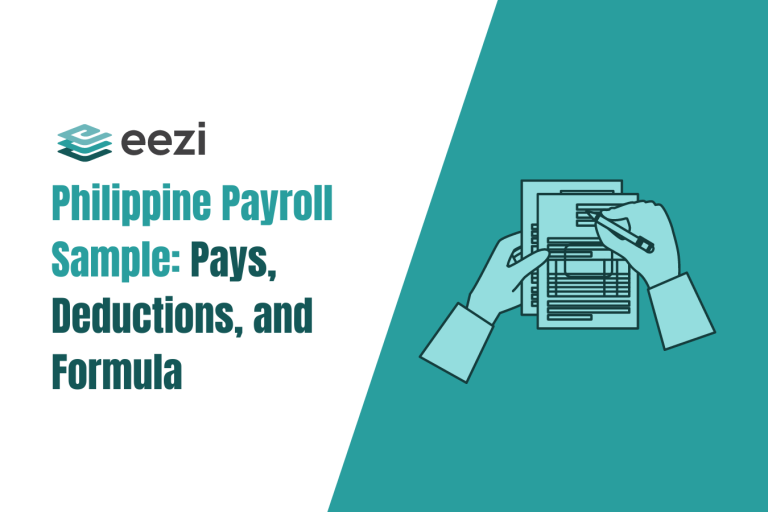What is the BIR Form 1601c in the Philippines?

If you have just started your business, creating payroll can be quite overwhelming, especially if you have no accounting background. Aside from creating an effective system, you need to make sure that you are compensating your employees accordingly.
This means that you also need to compute and withhold taxes. Furthermore, such computation should be based on the overall taxable income of all and any company paid. Sounds daunting, right?
It’s a good thing you can use BIR Form 1601-C as your guide. All the information required in the monthly remittance return form lets you calculate your withholding tax. After that, you are supposed to remit the amount to the Bureau of Internal Revenue for the month. This amount is based on the taxable income earned by your employees.
To learn more about BIR Form 1601-C, this short guide will provide you with what you need to know. Additionally, this will cover income taxes withheld from your employees’ monthly compensations.
Related: BIR Forms Employers Should Be Familiar With
What is BIR Form 1601C?
All business entities in the Philippines are required by law to act as withholding agents. They are acting on behalf of the Bureau of Internal Revenue (BIR), the country’s tax collection agency. To do this, they need the BIR Form 1601c.
The BIR Form 1601C is also called the Monthly Remittance Return of Income Taxes Withheld on Compensation Paid. This is a document that the payor or withholding agent needs to fill out every month.
This tax form needs to be filed in three copies.
Information contained in this form helps the BIR determine how much tax can be collected from your business. This will reflect the amount for the month based on taxable employee income.
How to fill out BIR Form 1601C
- Step 1: Access the Form
- Step 2: Fill Out the Background Information
- Step 3: Fill Out the Computation of Tax
- Step 4: Fill Out the Details of Payment
- Step 5: Sign the Form
- Step 6: File the Form
- Step 7: Pay the taxes
Ensure all the information is accurate to avoid penalties. Also, keep copies of all filed forms and proof of payment for your records.
Who files the BIR Form 1601C?
The withholding agent or payor can be any person in a business entity. Furthermore, they are in charge of computing and processing financial compensation for their employees.
It can be an officer or employee. However, this person must have authority and control over computing, processing, and releasing the income. Aside from this, they may also be responsible for other financial compensations for the company’s workforce.
Corporations
Suppose the payor or withholding agent is a corporation. In this case, the name of the corporation shall be on the BIR Form 1601C for its monthly remittance return.
Signatories may include the president of the corporation, its vice president, and any other duly authorized officer or personnel.
The completed Form 1601C will then be countersigned by the corporation’s treasurer or assistant treasurer.
Fiduciary
In cases of fiduciaries, the payor shall indicate on BIR Form 1601-C the name of the individual, estate, or trust that the fiduciary is acting on behalf of, which is then verified by the fiduciary.
Hazardous Employment for Private Sector Businesses
For businesses involved with hazardous employment in the private sector, the withholding agent or payor must attach a copy of the list submitted to the Department of Labor and Employment Regional/Provincial Offices – Operations Division/Unit with the filing of BIR Form 1601-C.
This list shall include the names of minimum wage earners who have received hazard compensation, their period of employment, the amount of hazard pay per month, and the justification for paying the hazard pay.
The list should be certified by the DOLE local office or affiliated government agencies stating that the hazard pay is justifiable.
This attachment should be included when filing the 1601C monthly remittance return for the following return periods: March, June, September, and December of the fiscal year.
Hazardous Employment for Public Sector Businesses
For businesses in the public sector involved with hazardous employment, the authorized withholding agent must attach a copy of a Department of Budget and Management (DBM) circular or its equivalent to BIR Form 1601C.
This document will contain the names of employees who are entitled to receive hazard pay.
When to File the BIR Form 1601C for the Monthly Remittance Return
The completed Form 1601-C should be filed, and the tax paid on or before the tenth of the month succeeding the month when the withholding taxes have been applied. You may file the 1601C form through the Electronic Filing and Payment System (eFPS).
However, for taxes withheld for the month of December, the filing of the Monthly Remittance Return of Income Taxes Withheld on Compensation form shall be no later than January 25th of the following year.
When to Withhold Taxes and When Not To
The major purpose of withholding taxes in advance is to ensure the efficient collection of taxes.
This is why, under the Philippine Tax Code, all business entities are considered withholding agents on behalf of the government.
They are mandated by the government to appropriately withhold tax and remit it to the Bureau of Internal Revenue.
In general, it is construed that any compensation paid is taxable.
Therefore, exemptions are not to be assumed.
Rather, the taxpayer or withholding agent is required to deduct and withhold the approximate tax due on all income payments.
The country’s withholding tax structure encloses the following, whether an individual or non-individual:
- Private individuals
- Organizations
- Corporations
- The government and its instrumentalities
- Political subdivisions
- Government-owned or controlled corporation(s)
All taxpayers should be aware of the withholding tax laws and regulations. Otherwise, they will incur penalties on top of the basic taxable amount.
In addition, taxpayers can file completed annual income tax returns and pay their corresponding taxes due to an authorized agent bank (AAB). Alternatively, they may also pay through a revenue collection office (RCO) anywhere in the country.
The actual location can be different from the (RDO) Revenue District Office, where the taxpayer is registered and will not incur penalties for filing in an incorrect venue.
Thus, collecting taxes through this mode helps facilitate a more streamlined and hassle-free method while reducing the effort of the government to fulfill this duty.
FAQs
What does tax return mean?
A tax return is a form that a taxpayer fills out to indicate an annual statement of income earned and other personal circumstances. The information contained in these forms is used by the government’s tax authority to assess tax liabilities.
What does mixed-income earner mean?
As stated by the BIR, mixed-income earners are workers engaged in the trade or business profession while also earning compensation. Simply put, you work as a full-time employee for a legitimate business entity while also engaging as a part-time employee for contractual or project-based jobs.
What is an amended return?
A taxpayer can file an amended or updated return form to make corrections to tax returns submitted the previous year. You can complete and file this form for instances such as corrections for incorrectly reported earnings, tax credits, or typos on financial figures originally indicated.
Compute and Withhold Taxes the eezi Way!
With eezi, completing your company’s monthly Form 1601-C will be fast, easy, and hassle-free! Try our system, from time and attendance to payroll.



